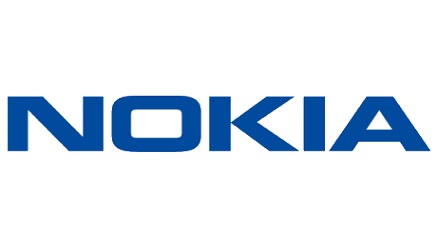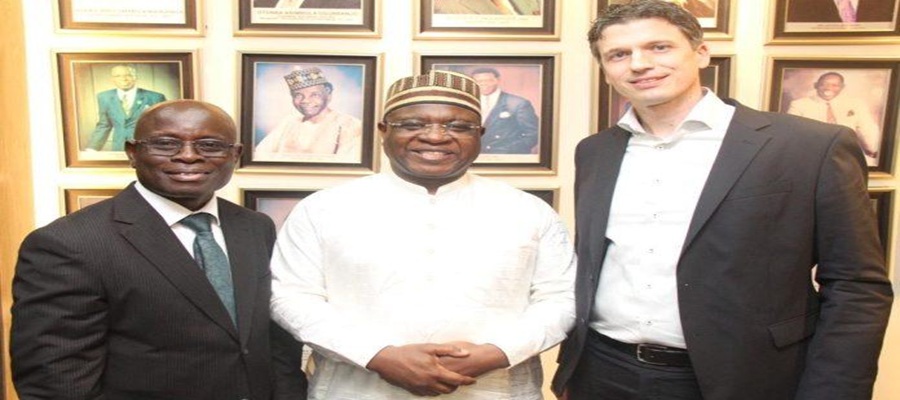News
How Nokia Ushers in 100G Transport Services Era

Nokia on Tuesday introduced a significant expansion of its 1830 Photonic Service Switch (PSS) portfolio, quadrupling optical fiber capacity to more than 70 terabits per second to address surging network data traffic demand.
Centered around the Photonic Service Engine version 2 (PSE-2) from Nokia Bell Labs, the enhanced 1830 PSS family doubles wavelength capacities and wavelengths per fiber, giving operators a platform to efficiently deliver the 100G transport services that customers are demanding.
Service providers are under tremendous pressure to scale their networks to meet the demands of large enterprises, cloud operators and Internet content providers for high-capacity, on-demand services – all while maintaining profitability by lowering cost per bit.
According to a white paper published by industry analyst firm Ovum, the rapid adoption of 100G router ports for the interconnection of data centers and metro and backbone applications is driving the need for operators to migrate from 10G client services to 100G to keep pace with escalating transport requirements.
Yet capacity alone is no longer sufficient to respond to ever-changing bandwidth demands. Optical transport is evolving from relatively static applications to highly dynamic services that can be turned up quickly and reconfigured on the fly.
Nokia is helping operators address these challenges with an expanded 1830 PSS portfolio featuring unprecedented flexibility through the new PSE-2 chipset and industry-leading scale with the 1830 PSS-24x.
These innovations and platforms provide operators with a cost-effective way of delivering business-driven 100G transport services.
Highest Performance, Most Programmable Optical Chipset
The PSE-2 is the world’s most sophisticated and highly integrated electro-optic chipset. It gives network operators the power to nimbly balance wavelength capacity and reach, maximizing the efficiency of every fiber in their network. The Nokia-designed PSE-2 is available in two versions:
The PSE-2 Super Coherent (PSE-2s) provides the ultimate in performance and flexibility for applications with very high traffic demands and potentially challenging distance requirements.
It can be programmed with seven unique modulation formats to support optimized 100G to 500G transport wavelength capacities, and distances for applications ranging from metro to ultra-long haul – including the industry’s first 400G single carrier, the first 200G long haul and the first 100G ultra-long haul.
The PSE-2s lowers cost per bit per kilometer by maximizing capacity for every distance, while using 50 percent less power.
The PSE-2 Compact (PSE-2c) is optimized for 100G DWDM applications where density, space and low power are paramount, including metro access and aggregation networks. The PSE-2c design creates more compact line cards that support “pay as you grow” pluggable optics, while consuming 66 percent less power.
Most Scalable Packet-OTN Switch Delivers Efficient Wavelengths And Differentiated Services
Employing the new Nokia-designed Transport Switching Engine (TSE) chipset, the 1830 PSS-24x is the industry’s most scalable packet/OTN multilayer switching platform.
By combining a TSE-powered switch fabric with PSE-2 coherent interfaces, the 1830 PSS-24x offers 9.6 terabits of switching per half-rack shelf, scalable to 48 terabits per rack.
This gives operators a new level of 100G service density, efficiency, and resiliency while using 50% less space and power than current generation packet/OTN switches.
Flexible DWDM Line Card With Up To 500g Capacity
Powered by the PSE-2s and its variable modulation capabilities, the 1830 PSS 500G DWDM Muxponder gives network operators unprecedented capacity, reach, and wavelength flexibility.
It also offers operators investment protection for their 1830 PSS platforms with an instant capacity upgrade, carrying as many as five 100G services per line card.
The 500G line card is available and being delivered to customers now.
Complete DWDM Transport Solution With Doubled Capacity
Nokia has expanded its industry-leading Wavelength Routing solution to support the L wavelength band, creating the industry’s most scalable optical layer by doubling the number of wavelengths per fiber.
By integrating PSE-2 powered interfaces and Colorless, Directionless, Contentionless, with Flexgrid (CDC-F) technology, the 1830 PSS Ultra-Wideband Wavelength Routing solution becomes the industry’s first C+L band CDC-F system, giving operators unprecedented programmability in the photonic layer.
Daniel Melzer, CTO of DE-CIX, said: “By operating the world’s leading Internet exchange with peak traffic of more than 5 Terabits per second, DE-CIX is seeing an increased need to dynamically interconnect 100G router ports to handle our changing bandwidth needs. We are excited to see Nokia introducing the optical innovations of the 1830 PSS 500G Muxponder, which can be reprogrammed quickly to multiple transport wavelength capacity and distance configurations. This unprecedented flexibility on a single optical line card will deliver a highly cost-effective solution that can support both raw capacity at 500G and maximum long haul distance at 200G.”
Ron Kline, Principal Analyst, Intelligent Networks at Ovum, said: “According to our research, service provider adoption of 100 Gigabit Ethernet is expected to drive growth of Core IP/MPLS routers to roughly $3.6 billion by 2020. This, in turn, will fundamentally transform operators’ networks as they look for solutions to handle this massive capacity increase in increments of 100G. Nokia has addressed this trend with its next-generation PSE-2 powered portfolio. The PSE-2 innovations deliver both scale and flexibility across every layer of the optical transport network.”
Sterling Perrin, Senior Analyst at Heavy Reading, said: “Nokia has come out with a powerful combination of innovations aimed at increasing capacity while also adding flexibility and improving efficiency in optical transport networks. More significantly, these are not just technologies, but commercial products that are being rolled out right now. While each of the PSE-2 advancements is important on its own, it is really the flexible combination of features – covering 100G to 200G to 400G and from metro to long haul and ultra long haul applications – that makes the PSE-2 announcement so compelling.”
Sam Bucci, head of optical networking at Nokia, said: “When we introduced the industry’s first single carrier 100G solution in 2010 we became a leader in optical network transformations, a position that was further solidified when we released the first programmable 100G/200G line card. With the launch of the PSE-2, our 500G Muxponder and the 1830 PSS-24x, we are again at the forefront of innovations, leading the way to 100G client services being the currency of modern optical networks. Thanks to the optical innovations of Nokia Bell Labs we are able to keep operators ahead of today’s aggressive bandwidth demand curve.”
News
NGX Unveils Net-Zero Plan for Greener Capital Market

Nigerian Exchange Limited (NGX) has launched the NGX Net-Zero Programme to guide listed companies toward clear carbon reduction pathways and enhanced climate disclosures aligned with global investor standards.

NGX
The high-level launch engaged chief executives of quoted firms alongside development partners including German Investment Corporation KfW, DEG, and African Foresight Group (AFG), NGX’s implementation partner. Issuers and investors discussed financing decarbonisation, sustainability practices, and attracting climate-aligned capital.
NGX Group Chairman Dr Umaru Kwairanga described the initiative as concrete climate action, commending partners for two years of groundwork. “Today marks leadership and decisive action. Climate change has become a core business imperative, with capital markets mobilising capital and setting standards,” Kwairanga said.
He positioned NGX Net-Zero to support emissions measurement, disclosure, capacity building, and sustainable finance access, urging CEOs to embrace it strategically rather than as compliance. Kwairanga reaffirmed NGX’s goal to make Nigeria’s capital market Africa’s green finance hub.
Group CEO Temi Popoola called climate action a business imperative, noting sustainability-embedded firms attract capital, manage risks, and stay competitive. DEG Management Board Member Monika Beck highlighted partnerships scaling impactful, commercially viable climate solutions.
The event closed with a ceremonial gong marking the programme launch and send-off for outgoing DEG Regional Director Bernd Telemann.
News
Nigeria Off EU High-Risk Money Laundering List in Major Financial Win

Nigerian Financial Intelligence Unit (NFIU) has hailed Nigeria’s removal from the European Union’s list of high-risk third countries for Anti-Money Laundering and Countering the Financing of Terrorism (AML/CFT) as a landmark achievement endorsing the nation’s reform efforts.

Nigerian Financial Intelligence Unit (NFIU)
NFIU CEO Hafsat Abubakar Bakari said the delisting, contained in European Commission Delegated Regulation (EU) C (2025) 8460 adopted December 4, 2025 and effective January 29, 2026, affirms sustained AML/CFT and Counter Proliferation Financing (CPF) reforms.
The move follows Nigeria’s exit from the FATF Jurisdictions under Increased Monitoring after addressing strategic deficiencies, alongside Burkina Faso, Mali, Mozambique, South Africa and Tanzania.
Bakari noted the European Commission recognised Nigeria’s strengthened AML/CFT effectiveness, closed technical gaps, and fulfilled FATF Action Plan commitments leading to grey list removal in June and October 2025.
The delisting eliminates enhanced due diligence requirements for EU financial transactions, easing compliance, boosting cross-border flows, and enhancing Nigeria’s appeal for European trade, investment and partnerships.
The NFIU attributed success to President Bola Ahmed Tinubu’s political will and collaboration among National Assembly, law enforcement, regulators, judiciary, private sector and development partners.
The agency reaffirmed commitment to ongoing FATF, GIABA, EU engagement and domestic framework resilience to maintain international confidence in Nigeria’s financial system.
News
FG Directs Banks, Fintechs to Remit VAT on Service Fees

The Federal Government has directed all banks and fintechs to collect and remit 7.5 per cent value-added tax on certain electronic banking services, effective Monday, January 19, 2026, according to an email notice issued by payment platforms.

The VAT will apply to electronic banking charges, including mobile money transfers, USSD transaction fees, and card issuance fees, according to an email notice on Wednesday shared with customers by Moniepoint.
For example, if a bank charges N100 to make a transfer, the 7.5 per cent VAT will be applied to that service fee, not the money being sent.
“From Monday, January 19, 2026, we are required to collect a 7.5 per cent VAT, to be remitted to the Nigerian Revenue Service (formerly known as the Federal Inland Revenue Service).
“VAT will apply to certain banking services that include electronic banking charges such as mobile banking fees (transfers), USSD transaction fees, and card issuance fees,” the email read.
Other operators are expected to issue similar notices to their customers in the coming days. Services that will remain exempt include interest earned on deposits and savings, meaning customers will not pay tax on the returns from their accounts.
The NRS, formerly known as the Federal Inland Revenue Service, has set the deadline to ensure that all commercial banks, microfinance banks, and electronic money operators comply with the collection and remittance requirement.
Moniepoint stressed that this is not a price increase but a statutory obligation. “Moniepoint is required to collect and remit VAT to the Nigerian Revenue Service,” the company said in a statement.
The move is part of the government’s broader efforts to standardise VAT collection on digital financial services and expand revenue generation amid Nigeria’s growing digital economy. VAT on banking transactions is not entirely new; the NRS is now enforcing uniform collection rules across all platforms, ensuring compliance across the sector.
Customers have been assured that the new tax will be clearly itemised, with the VAT shown separately on transaction statements and reports.
In December, several commercial banks informed customers that the N50 stamp duty would be deducted on electronic transfers of N10,000 and above, following the commencement of provisions of the new Tax Act.
The charge, previously known as the EMTL, has now been formally reclassified as stamp duty and will be applied as a one-off fee on qualifying electronic transfers.

 E-Financial2 days ago
E-Financial2 days agoPaystack Expands Beyond Payments into Banking

 E-Business2 days ago
E-Business2 days agoNigeria Targeted with 4,622 Cyber-attacks Per Week in December 2025

 E-Financial2 days ago
E-Financial2 days agoSEC Partners Police in Nationwide Crackdown on Ponzi Schemes, Crypto Frauds

 E-Financial2 days ago
E-Financial2 days agoFG Halts Tax Guidelines Amid Uncertainty Over Final Laws – Oyedele

 E-Financial2 days ago
E-Financial2 days agoPaystack Buys Microfinance Bank, Enters Nigeria Banking Arena

 News2 days ago
News2 days agoFG Directs Banks, Fintechs to Remit VAT on Service Fees

 General News2 days ago
General News2 days agoEFCC to Use Space Technology to Boost Asset Tracking, Investigations

 General News2 days ago
General News2 days agoHow to Stay Safe Online During Sales Periods















